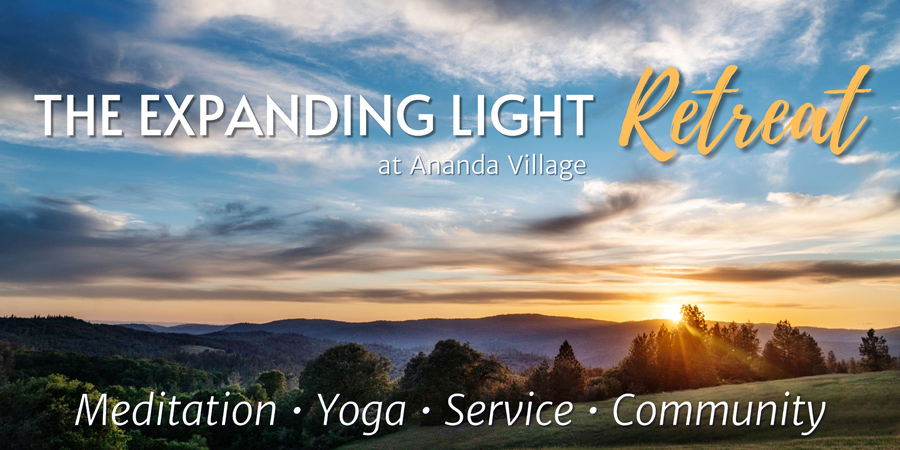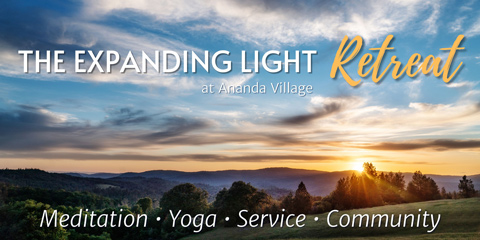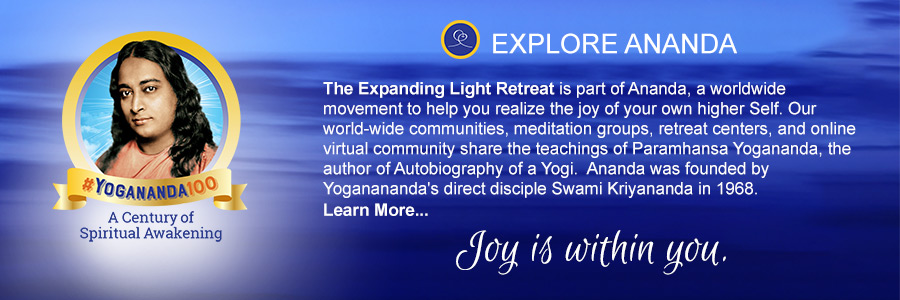Complete Pranayama Practice Guidelines
For guided, in-depth practice of a wide variety of pranayama techniques, see the 2-CD set Pranayama for Deeper Meditation, by Nayaswami Gyandev.
- It’s best to begin with a few warm-ups to open your breathing. Here is a brief video you can use.
- Sit upright with your body relaxed and your back unsupported. With eyes closed, turn your gaze toward the spiritual eye, which is to say, gaze out in front of you and slightly above the horizon line. This helps bring your energy and awareness to the spiritual eye, where they need to go in order for you to meditate deeply.
- Breathe through the nose unless otherwise instructed or you have a breathing obstruction. Your abdomen should expand as you inhale, and relax back in as you exhale. Your chest too will expand and relax, but only slightly unless you’re breathing deeply.
- Keep your nose, mouth, and face relaxed.
- Your breath should flow evenly — not, for example, faster at the beginning of your inhalation than at the end. When practicing pranayama to raise consciousness, your inhalations and exhalations should be of equal duration. Unequal inhalations and exhalations have other purposes; e.g., longer exhalations promote calmness and have a cleansing effect.
- Usually all phases of the breath should be as long as possible. This applies especially to the retention phase, because your mind is quieter and more powerful when the breath is still. However, don’t force your breaths or retentions to be longer than comfortable, because forcing will agitate your mind.
- It’s best if both nostrils are equally open during pranayama practice. If one side is a bit closed, you can usually restore balance by lying down on the opposite side of your body for 30–60 seconds.
- Honor your limits. Even a simple pranayama can be overdone, or maybe it’s just not right for you on a given day. So if your practice makes you anxious, agitated, irritable, spacey, or off-center, stop it and return to easy, natural breathing.
- Certain physical conditions call for caution. For example, those who are pregnant or have significant cardiovascular problems should hold the breath only for a very short time, if at all. They shouldn’t make the inhalations and exhalations very long, either, nor should they practice the vigorous pranayamas. If you’re in doubt, consult a physician.
Subtler practice guidelines
- Always practice with a sense of relaxation. Tension and strain won’t take you to higher consciousness. Yes, quality effort and concentration are necessary, but always with a sense of physical, mental, and emotional relaxation—and enjoyment, too.
- Practice with the quality that you want to gain from the technique. For example, if you’re practicing a calming technique, practice with whatever calmness you can manage, with enjoyment of that calmness, and a joyful expectation of more calmness to come. Similarly, if you wish to gain alertness, focus, stillness, balance, expansiveness, or upliftment, as much as possible, be that quality as you practice.
- Bring God into your practice. Techniques have power, but by themselves they cannot take you to the highest fulfillment. Only divine grace can do that. What the techniques can do is help build your magnetism to attract grace, and purify your heart to receive it more fully. Try to feel Him or Her guiding you in each moment, and gratefully offer all you receive back to its Divine Source. Then your practice will be all that it can be.
Blessings on your practice!
- What Is Ananda Yoga?
- Ananda Yoga books, CDs, DVD’s, props
- Warm-Up Videos for Asana & Pranayama
- Instructional Aids & Safety Guidelines
- Teacher Training & Continuing Education
- Ananda Yoga Retreats
All authors are graduates of Ananda Yoga Teacher Training.




















